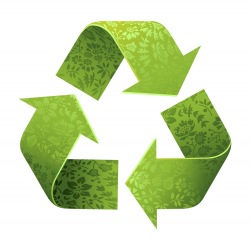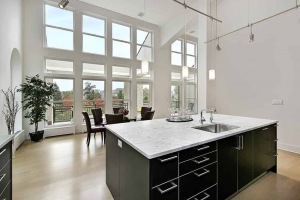Sustainable Building in Australia: Home Renovation Ideas
24 July 2020
 With the recent surge in media coverage and educational initiatives around climate change, as a nation are becoming more environmentally-aware.
With the recent surge in media coverage and educational initiatives around climate change, as a nation are becoming more environmentally-aware.
‘Going green’ is one of 2020’s most popular new year’s resolutions – and people are making conscious decisions in their daily lives to help reduce their carbon footprint.
And this extends to building practices. If you’re renovating your home and are looking for inspiration, we’ve put together 14 sustainable building home renovation ideas.
1. Renovate in the Milder Months
Renovations usually involve exposure to the elements, with walls being knocked down, windows and doors replaced and workmen going in and out. And this inevitably leads to energy loss.
Trying to compensate for this heat transfer by adjusting the thermostat will not only increase your energy bills, but will also increase your carbon footprint.
So, be kind to the environment – and your wallet – and plan your renovation for spring or autumn.
2. Adopt the 5 Rs
Australians create 67 million tonnes of waste each year and, sadly, a large portion of this still ends up in landfill. Much of the waste material sent to landfill releases leachate, a toxic liquid which pollutes our land and water, if not managed properly at the landfill via its leachate ponds.
leachate, a toxic liquid which pollutes our land and water, if not managed properly at the landfill via its leachate ponds.
However, by reducing the amount of waste you produce, less will end up in landfill. This, in turn, helps to reduce greenhouse gas emissions and global warming, as well as diminishing the impact on local wildlife.
So, Reduce, Reuse, Repurpose, Recycle, Repair:
- Reduce new product purchases: Cut down on new product purchases (especially those which are resource-intensive or heavily packaged) and instead look at what existing items you can keep.
Do you really need new kitchen benchtops, or will resurfacing the existing ones do the trick? And could your light fittings be modernized by spray-painting them?
- Reuse – and reuse again: Don’t be too quick to throw away an item; think carefully about how it could be reused – either for the same purpose, or for a new one!
For example,dated kitchen cabinets can be transformed with a lick of paint and new door handles, while you can breathe new life into old avocado bathroom suites by painting the enamel. Also, sofas can be re-upholstered and cushion covers dyed to bring them up to date.
Gift or sell any unwanted items, as opposed to throwing them away.
- Repurpose: There are a whole host of ways you can give an old product a new lease of life. For example, old outdoor paving can be used as a fireplace surround, while chipped mugs can be used as plant pots.
Using reclaimed materials is the easiest way to improve sustainability – and reduce your carbon footprint. It’s been a growing trend for several years and is now firmly embedded in mainstream interior design.
So, consider incorporating reclamation pieces into your renovation project.
- Recycle: Recycling provides huge environmental benefits – from saving natural resources; to reducing manufacturing and transportation emissions; to global warming and the effect on wildlife.
A key component of a sustainable renovation project is to incorporate materials which are better for the environment – with proven performance.
Select recycled, biodegradable materials that are produced with minimal pollution and energy costs.
From worktops and splashbacks made from recycled glass and concrete; to porcelain tiles made from recycled TV screens; to flooring created with recycled aluminium, there are a huge number of recycled products on the market.
- Repair: If an item is broken, try fixing it rather than throwing it away. And if it can’t be fixed, repurpose or recycle it.
3. Engage an Environmentally-Responsible Skip Provider
You’ll likely need to hire a skip to dispose of the building debris, but not all operators are equal. Be sure to engage an environmentally-responsible provider.
A key question to ask your provider is what they do with the waste they collect. Have they implemented eco-friendly practices? Do they recycle any waste that can be recycled? Do they have their own material recovery facility? And ask how they are disposing of any non-recyclable waste.
4. Insulate, Insulate, Insulate
 Insulation is a critical factor in any sustainable building project. A well-insulated home will maximise energy consumption, helping to keep your home cooler in the summer and warmer in the winter. This means you will use less energy, reduce energy wastage and save money on your power bills.
Insulation is a critical factor in any sustainable building project. A well-insulated home will maximise energy consumption, helping to keep your home cooler in the summer and warmer in the winter. This means you will use less energy, reduce energy wastage and save money on your power bills.
Roof insulation is the most important form of insulation, as this is where most heat transfer takes place. However, insulation can be installed throughout your home’s structure, including:
- Under the roofing material
- Between the ceiling joists
- On the inside or outside of solid walls, or within stud frames or brick cavities
- Under the floors
- On the sides or the undersides of concrete ground slabs
There are various materials used for insulation and some are more eco-friendly than others. The most common sustainable insulation materials include:
- Fibreglass
- Polyester
- Sheep’s wool
- Cellulose
- Earthwool
According to studies, good insulation can cut in-home energy usage by a whopping 50%. And the additional cost of investing in a superior product will be offset by the energy savings you’ll enjoy over the coming months.
5. Install Double-Glazing
Unlike homes in cooler climates, double-glazing is not standard in Australian homes. It is, however, highly-effective in minimising heat loss in winter and preventing your home from heating up too much in the warmer months. And it is a ‘must’ for any sustainable build.
This energy-efficient choice also offers the added bonus of minimising noise and increasing security.
6. Add Solar Film to Your Windows
 By adding solar film to your windows, you can lower your energy consumption – and reduce your bills.
By adding solar film to your windows, you can lower your energy consumption – and reduce your bills.
Boasting insulative properties, solar window films reduce the transfer of heat and help to maintain an even climate inside your home.
A high-quality film can block up to 99% of harmful UV rays, reducing glare and harsh sunlight. In turn, this can prevent fading and damage to your furnishings and floorings.
7. Introduce Green Roofing
Another great way to insulate your home is by installing a green roof. A green roof is not only an effective insulant, but will also protect your roof from exposure to the elements and increase the biodiversity of your garden.
An ugly, flat roof can be transformed into an attractive wildlife haven.
8. Use Sustainable Products
When purchasing the materials for your renovation project, select sustainable products.
For example, use sustainably harvested wood for your cabinetry, composite timber for your decking and recycled aluminium for your fencing.
9. Avoid Toxic Materials
Avoid paints, glues, sealants and varnishes which contain toxins and instead opt for natural or organic alternatives. But make sure you read product labels carefully, as certain products marketed as ‘natural’ may only contain a very small percentage of natural ingredients.
Also, avoid volatile organic compound (VOC) products, as these contain chemical ingredients that evaporate into the atmosphere when the paint is drying, impacting air quality.
10. Engage a Green Contractor
A green contractor will be familiar with Australia’s building rules and regulations and is best placed to advise on the latest green building practices. Working with a green contractor can save you a lot of time in research and procurement.
11. Invest in Renewable Energy
Unlike man-made energy sources, renewable energy does not release greenhouses gases, carcinogens or CO2 — all of which contribute to the depletion of the ozone layer and the increase of global warming.
Switching to a renewable energy source – such as solar, wind or hydro – is a great way to reduce your carbon footprint.
While the installation of a renewable power system generally incurs a substantial capital outlay, the Australian Government is offering large financial incentives which will help to offset those costs.
Once installed, the energy generated is free – and you may even have the option to sell any unused power back into the grid. So, in the long-run you can enjoy vast savings on your energy bills.
12. Make Smart Lighting Choices
 When it comes to lighting, simple changes can lead to huge energy savings over time.
When it comes to lighting, simple changes can lead to huge energy savings over time.
Maximising the natural light in your home will substantially reduce your usage of artificial lighting. During the design and construction stage of your renovation, consider the orientation of your home and the placement of windows and skylights to capture maximum sunlight.
Opting for energy-saving (or energy-efficient) lightbulbs can reduce energy consumption by a whopping 80%. Lasting up to 25 times as long as traditional light bulbs, not only do they shine brighter, but they also require less energy to power them – meaning you save on electricity, decrease your carbon dioxide emissions and reduce your carbon footprint. What’s not to like?!
13. Water-Saving Appliances & Fixtures
By installing a water tank, you’ll be able to capture run-off and rainwater and reduce your water consumption. This recycled water can then be used in your bathrooms and laundry, as well as for watering your garden.
Connecting a low-flow showerhead and a dual-flush toilet will help to conserve water, as will choosing appliances – such as dishwashers and washing machines – which have a high water-efficiency rating.
14. Build to Last
Durability is essential for a sustainable home.
Build with high-quality, robust materials that require little maintenance. And use materials and construction techniques which are suitable for the local climate. The craftsmanship of your project should be such that it will survive a harsh environment, over a long period of time.
If your home requires a high level of maintenance and is in constant need of repair, it is not sustainable. So, build to last!
To book a skip, or for further information on sustainable waste management, please contact our friendly team today.









